Petunias of the Tidal Wave series: varieties and subtleties of care
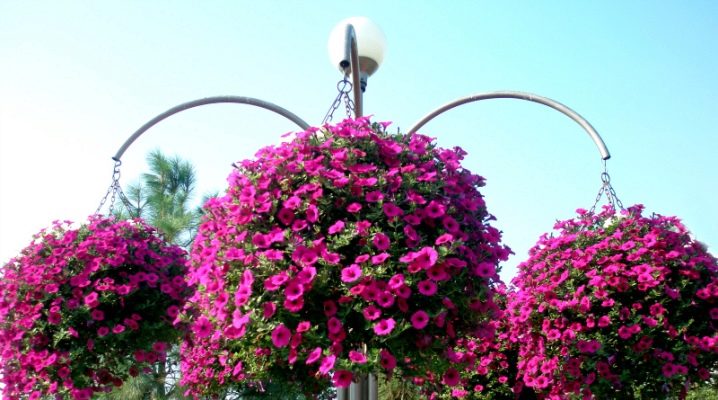
Petunias are arguably the most popular flowers in the world of horticulture today. They have won the hearts of many for their resistance in any weather, ease of planting, as well as a large selection of species, varieties, colors. One of the most commonly used species is the Tidal Wave petunia.
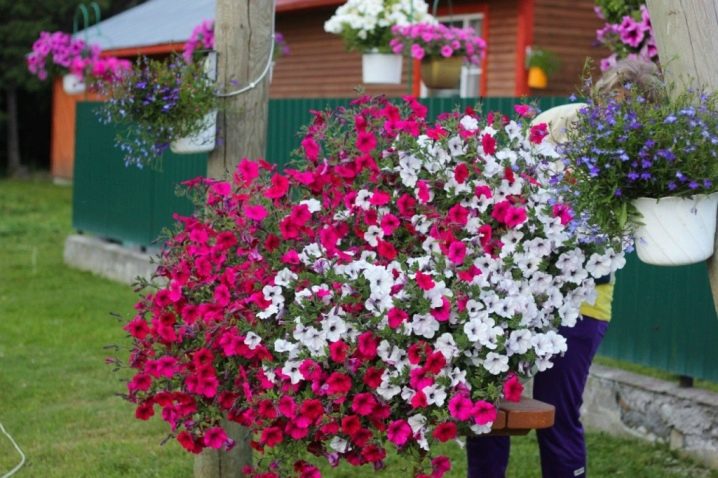
Description
The type of petunias "Tidal wave" differs from other types in strong, durable health, which allows you to quickly recover with minor injuries. And also surprising is its resistance when planting in difficult climatic conditions. The parameters of the plant are approximately as follows:
- Bush height 50-57 cm, and the bush itself is literally dotted with many flowers.
- Petals smooth, but there are varieties with double leaves.
- Flower size the maximum can be 6 cm in diameter.
- Branch length reaches 1.5 meters.
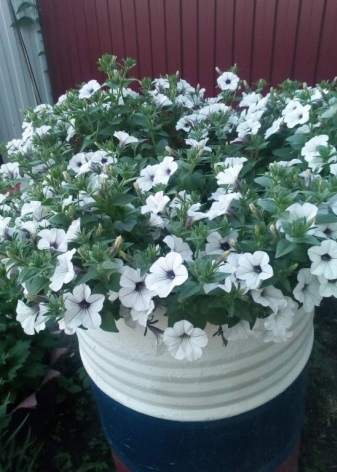
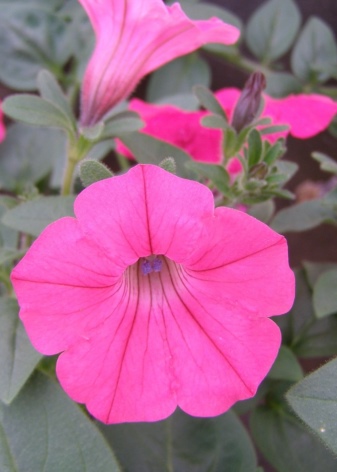
Care
Taking care of the plants of this type of petunia is not difficult at all. They are not picky, they tolerate any "surprises" of the weather well. They tolerate drought, but still do not forget about watering. The plant loves moisture. From time to time, you should loosen the ground under the bush.
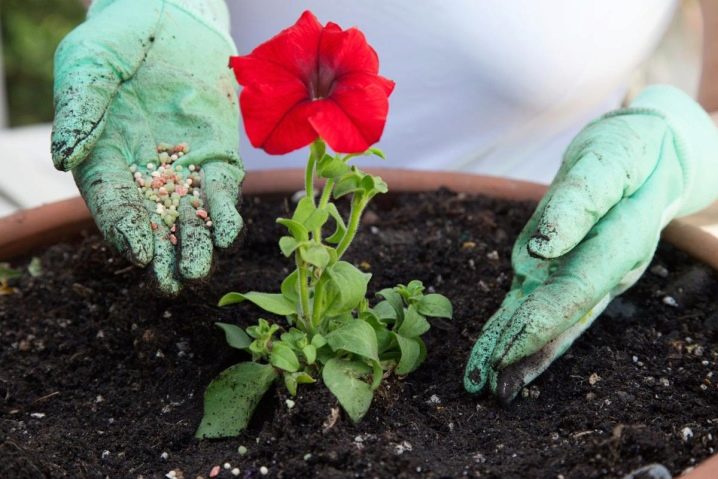
Growing
In fact, it is a perennial flower that is grown by flower growers as an annual. Its seeds are very small, but after planting it grows into a large and lush bush. It is recommended to plant petunias in early summer, and sow on seedlings as early as spring.
But if you can't wait to admire the blooming beauty, you can sow seeds in January.
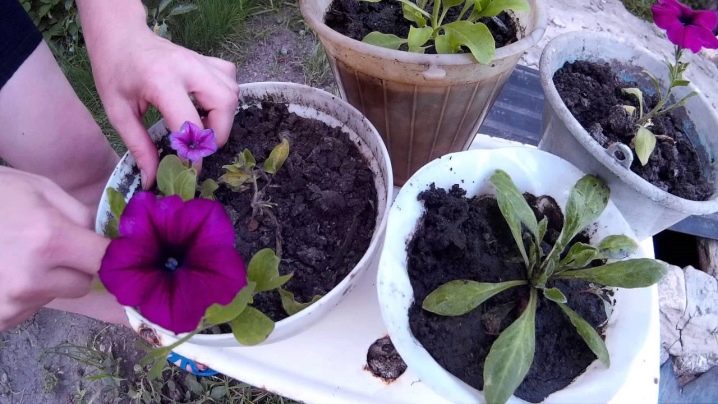
Varieties
Ampel petunia "Tidal wave" is a completely separate type of flowers, which is called "Giant Petunia".
In addition, the series of this wonderful plant has a bright variety of colors and is divided into different varieties.
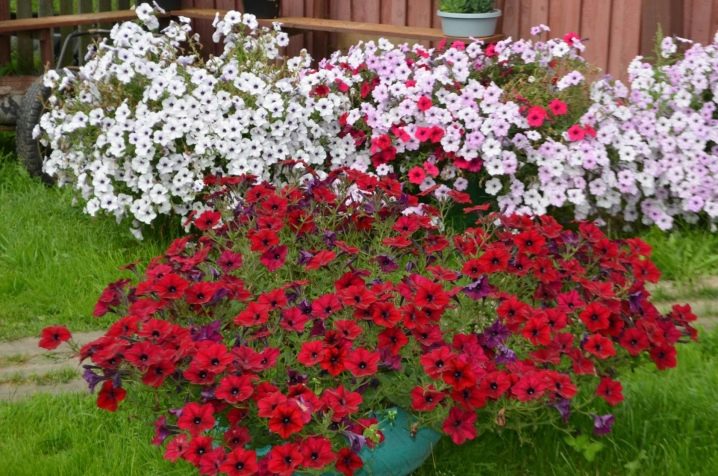
"Tidal Wave Silver"
One of the tallest bushes of the wave subspecies, dotted with flowers, with long stems 110–115 cm. The buds themselves are 5–7 cm in diameter, have different shades: white, light purple, bright purple, red. The bush of this variety can grow 55 cm high and up to 1.5 meters in diameter. Since the Tidal Wave Silver petunia grows over a fairly large area, it is immediately clear that she loves freedom.
In order for the blooming beauty to please the eye all the time, it is recommended to feed her, moisturize well, but not flood her with water. And also for good growth, it is allowed to add peat to the soil.
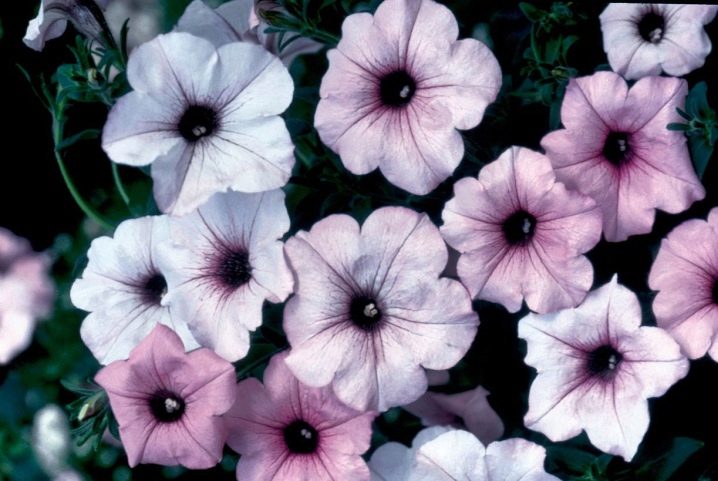
"Tidal wave red velor"
Fast growing ampelous petunia, great for home cultivation, as well as for the landscape. The height of the fiery red beauty is on average 55 centimeters, flowers with a diameter of 6 centimeters. Withstood before changes in weather, diseases. One of its bush can occupy an area of one or more meters.

If the plant is planted in flowerpots, it is recommended to use a container of at least 30 liters of volume. The soil for planting should be loose, to which it is added in equal parts:
- sand;
- humus;
- peat;
- sod land.
This variety is very fond of illuminated planting sites - you need to take this into account. Main rules:
- fertilize periodically;
- moisturize, but do not fill;
- cut off wilted flowers, leaves;
- sometimes loosen the soil at the roots.
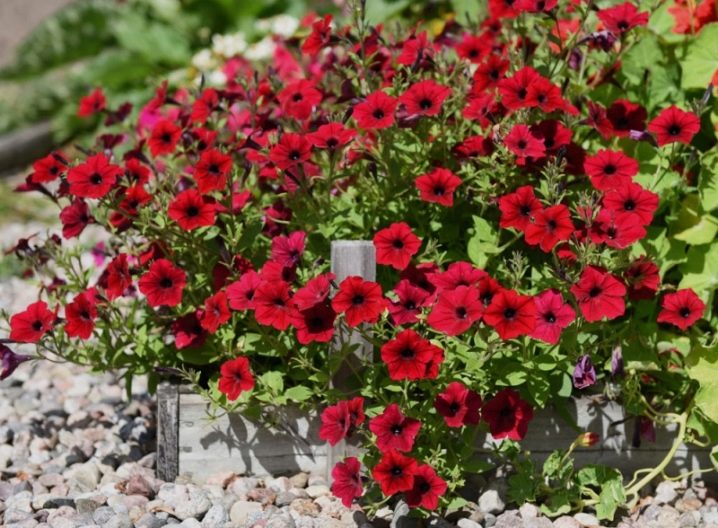
"Tidal wave cherry"
An annual plant, bush height from 35 to 70 cm. The diameter of the flowers is 6 cm, bright pink. Perfectly decorate a balcony, loggia, fill large flowerpots. Tolerant of cold or hot weather, loves moisture.
Simple care rules:
- loosen the topsoil from time to time;
- fertilize if possible (this will prolong the flowering time);
- remove all dry appendages;
- cut off withered buds, which will serve the good growth of neighboring ones;
- keep the earth moist.
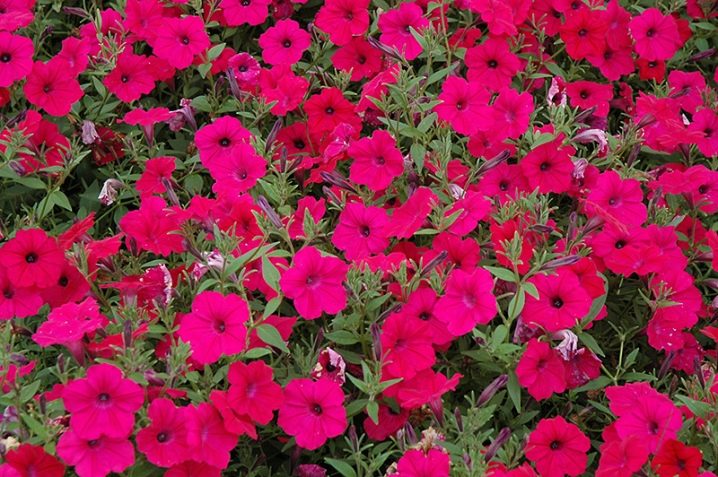
"Tidal wave parple"
Tall shrub - about 60 cm, dotted with many magical pink flowers with a diameter of 5-7 cm. Most often used for landscape design, has strong shoots, adapts well to different weather conditions. The shoots are 90–110 cm long with a probability of growing up to 1.5 meters to the sides.
When keeping this petunia, the following recommendations should be followed:
- fertilize a plant as often as possible, which is necessary for abundant and long flowering (especially often you need to fertilize the soil if flowers grow in flowerpots);
- if cultivation takes place in a flowerpot, then the volume of the container must be at least 30 liters;
- into the ground for planting it is best to add: peat, sand, perlite, which will provide protection and good growth of the petunia;
- don't forget about hydration - petunias love moisture;
- of necessity prune dried leaves, flowers.

"Tidal wave hot pink"
The annual hot pink petunia is also famous for its many flowers with a diameter of 6 centimeters, a bush height of up to 55 centimeters. Possesses firm shoots, which ensures safety in severe weather conditions, protects against diseases. Their length is 80-110 centimeters, the bush itself can grow up to 1.7 meters in diameter.
It is imperative to feed the plant with fertilizer once a week. This is especially true if the cultivation takes place in flowerpots, flower beds. The pot must be at least 30 liters in volume. If planted in a container, you need to pour drainage 10 centimeters high at the bottom. Like other varieties, don't forget to moisturize.
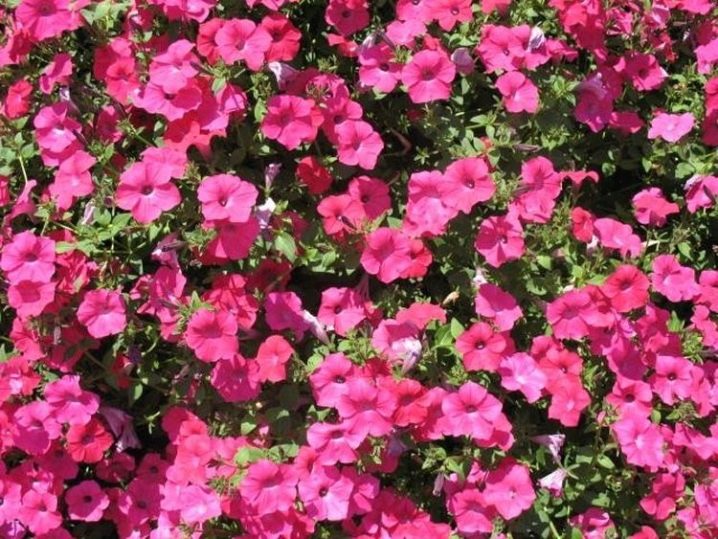
"Tidal shock wave"
Early ampelous petunia with especially fast growth. It grows up to 18 cm, the length of the stems is up to 85 cm, the diameter of the flowers is 4–5 cm. The flowers are the smallest in comparison with other petunias. "Shock Wave" blooms very luxuriantly, quite resistant to brittleness. The color of the petunia can be: snow-white, dark blue, pink, yellow. Flowers can be terry to the touch.
Loves hot and humid climate very much. But if it is impossible to ensure this, then the bush will not stop blooming and delighting due to its endurance to the surrounding growing conditions. Care requirements are as follows:
- loosening the topsoil at the roots as often as possible;
- fertilizing with fertilizers at least once a week;
- you can cut the bush if you want to create a shape;
- timely removal of wilting flowers;
- removal of dried branches and leaves.
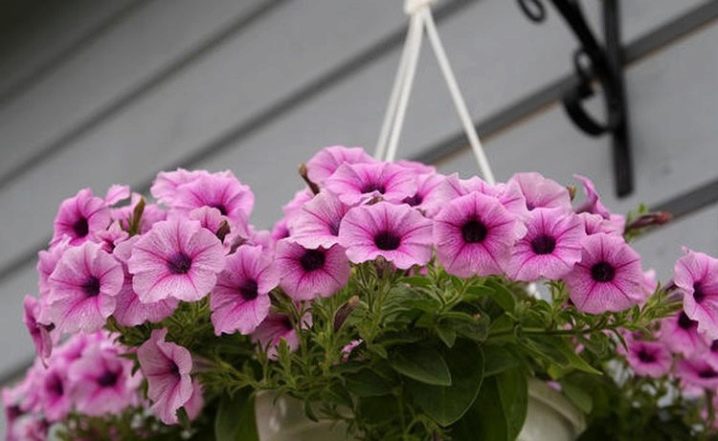
Advantages and disadvantages of Tidal Wave
Every flower and every plant, even the easiest to grow, has its pros and cons. The beauty petunia did not pass it by either. Many flower lovers believe that petunia is the most convenient flower for planting, unpretentious in the weather, and easy to care for. But it also has its positive and negative qualities. Let's take a look at them.
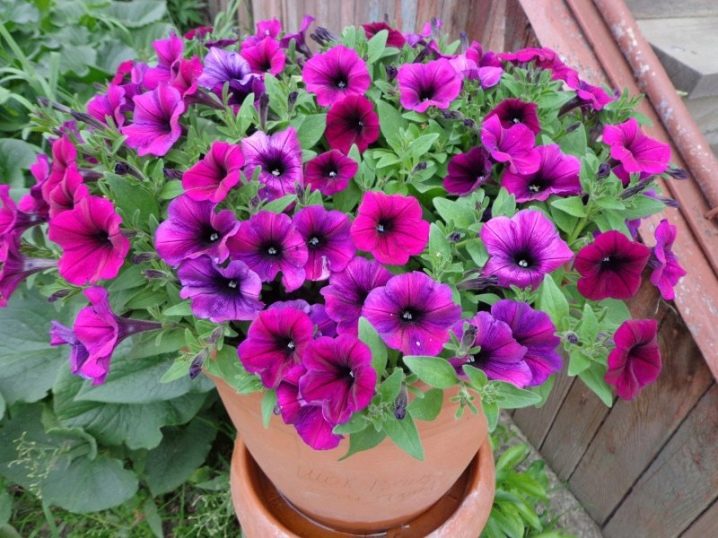
Superiority:
- The bush blooms very quickly when compared with other plants. Flowering begins on the 14th day.
- Blooms steadily, while other species bloom either too quickly, or, conversely, slowly.
- Easily tolerates bad weather: strong wind, rain, heat.
- It has persistent sweet smell.
- Conveniently can be placed in balcony pots, boxes, small flower beds.

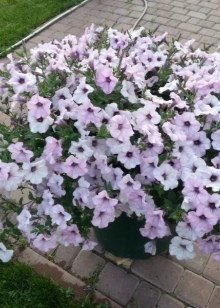

Disadvantages:
- There is only one negative factor. These petunias need a large number of seeds to set. This fact can have a bad effect on the quality of flowering. But if you take care of the flowering correctly, the defect will be insignificant for the plant.
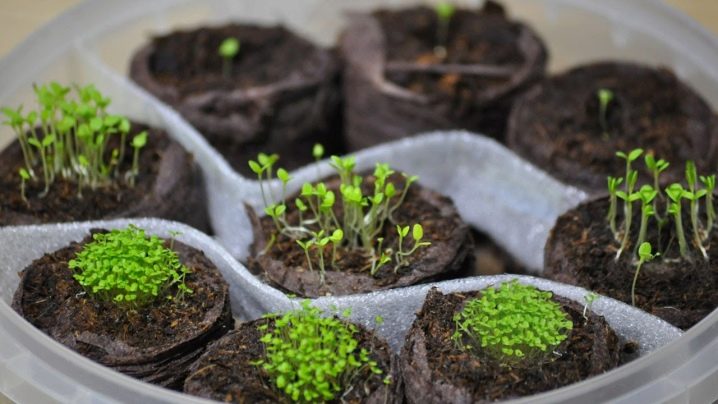
Tidal Wave Landing Tips
- For decorative planting perfect: balcony pots, boxes, hanging baskets.
- Seating is best rarely - if the grown bushes do not touch each other, this will provide them with good flowering.
- If the flowers are planted densely, it is recommended to do this with an inclination to the edge of the selected container.
For information on how to sow ampelous petunia correctly, see the next video.







































































































The comment was sent successfully.